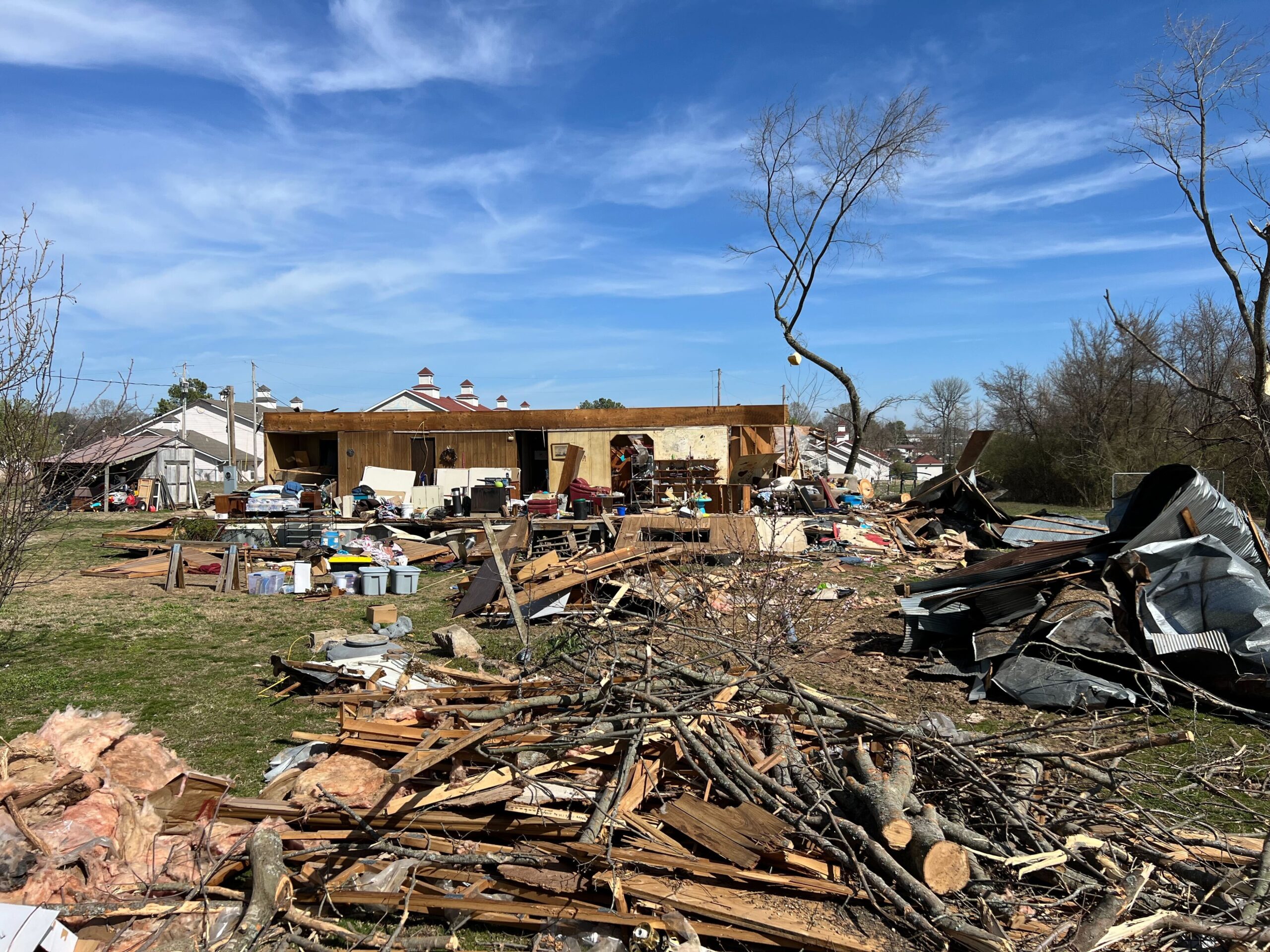

National media coverage of severe weather events is generally limited as attention quickly shifts to other news stories. Reduced visibility of severe weather events in the media particularly affects rural communities within the affected regions, whose specific recovery needs often receive less attention. These circumstances present important considerations for disaster relief funding allocation.
2025 severe weather at a glance
- Recent workforce reductions of over 600 NWS employees nationwide have created operational challenges at multiple NWS locations, including difficulties maintaining regular weather balloon launches critical for data collection.
- As of May 22, there have been 724 tornadoes so far this year.
- At least 35 people have died in 2025 from tornadoes.
(Photo: Tornado damage in Cave City, Arkansas, March 2025. Credit: Marc Madama via Matthew 25: Ministries)
Latest Updates
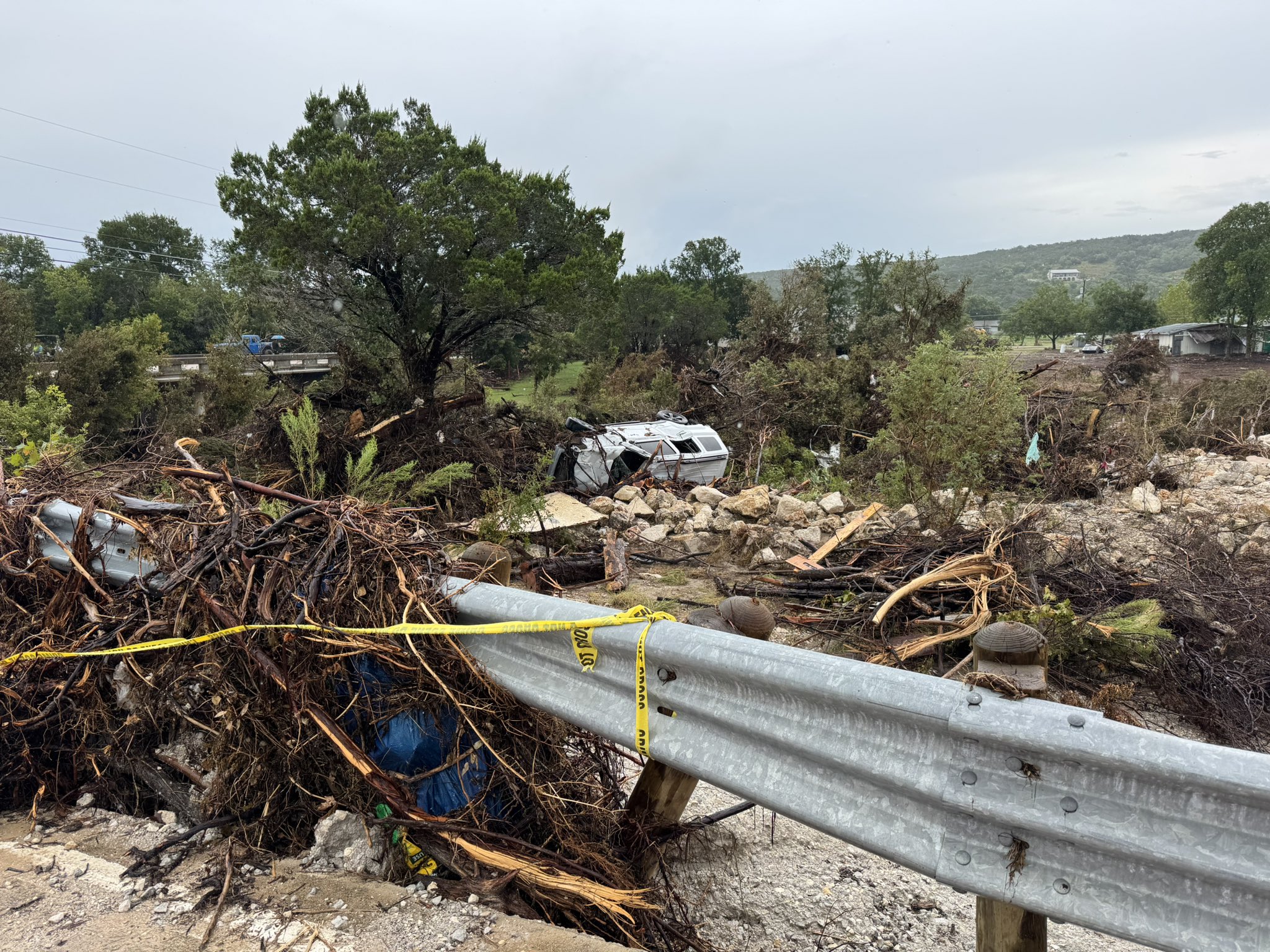
Floods in the US: How funders can help communities prepare
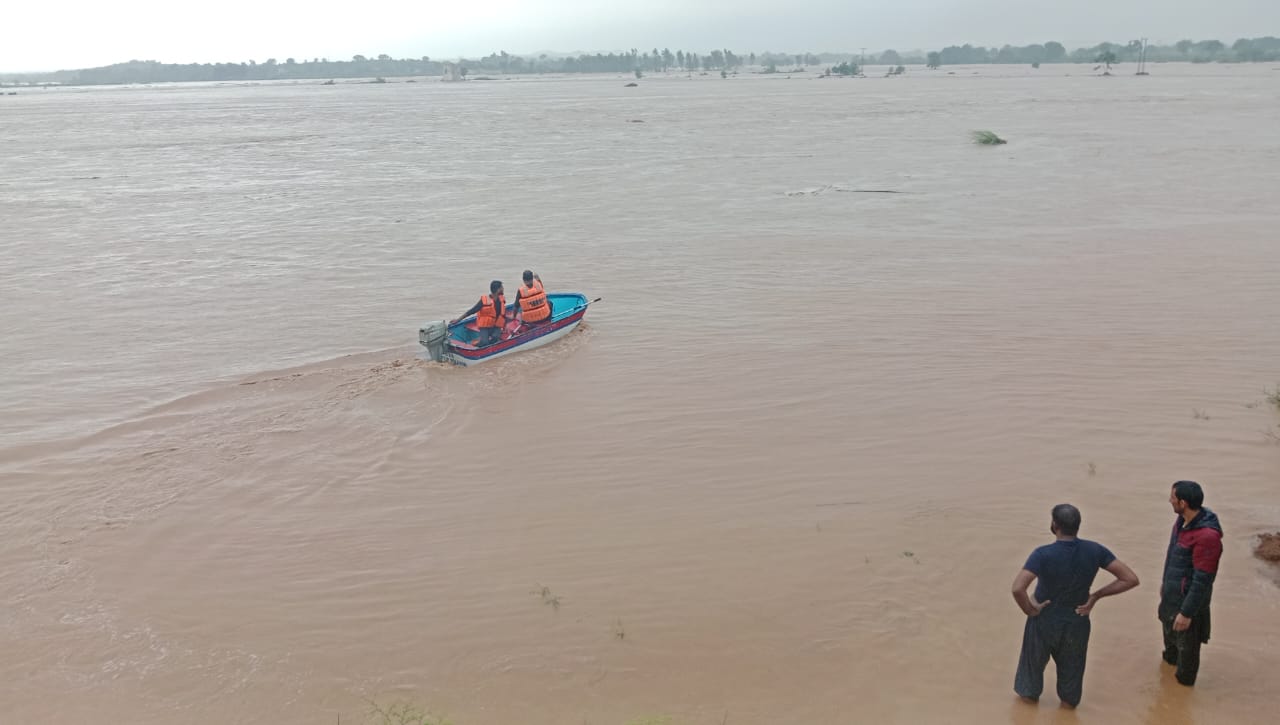
What we’re watching: Weekly disaster update, July 21
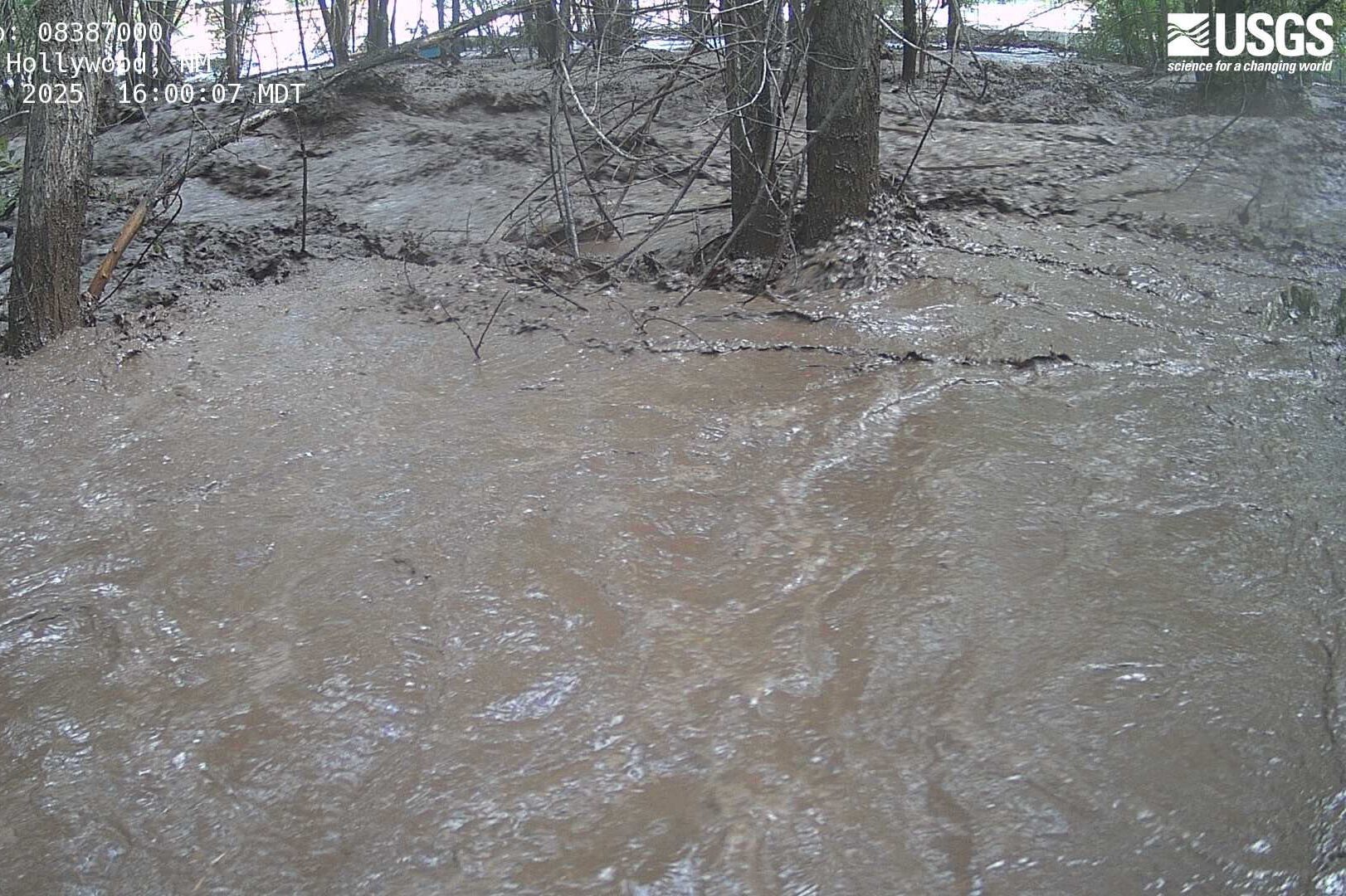
Reducing flood risks by investing in mitigation and preparedness now
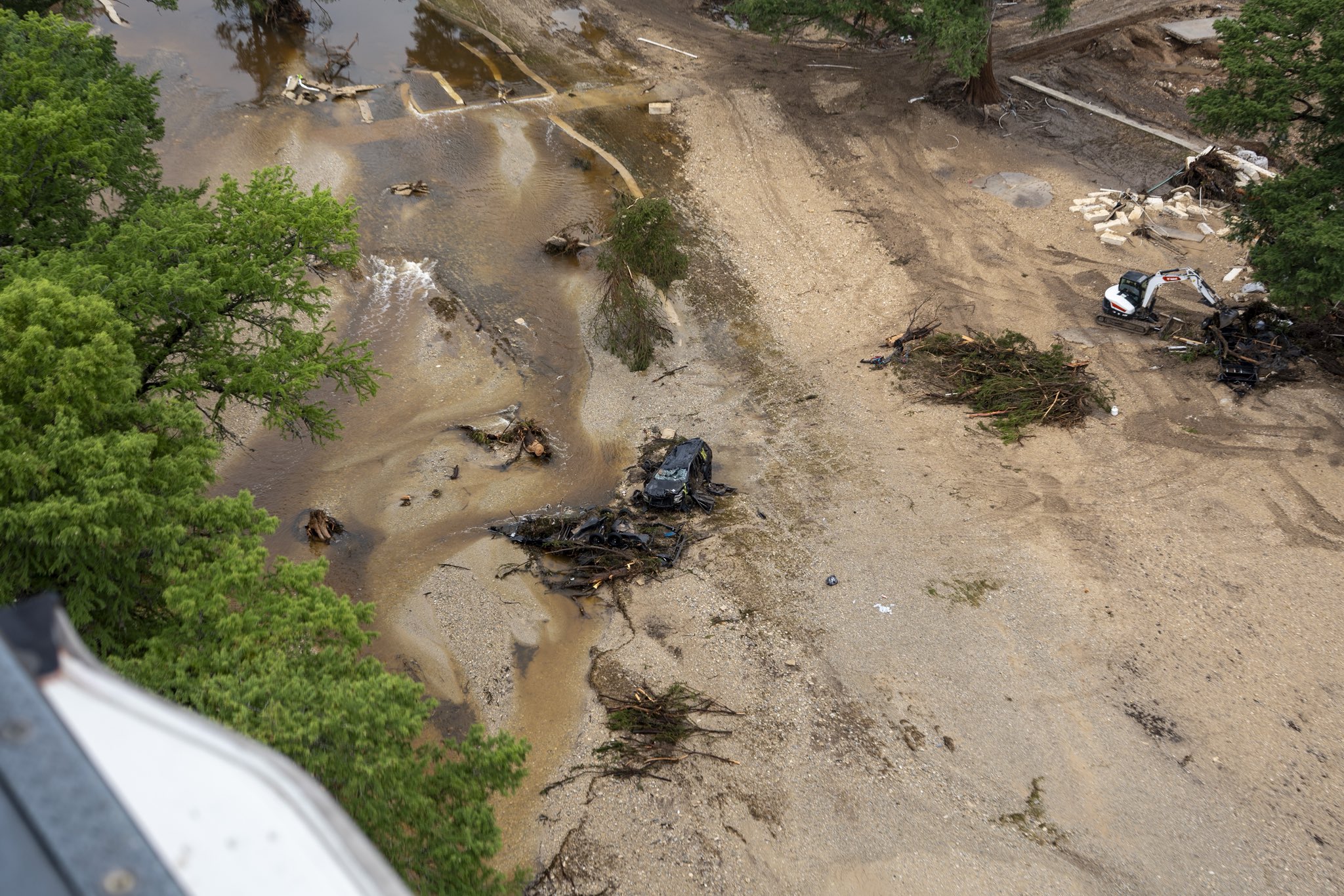
Our hearts are with Texas

What we’re watching: Weekly disaster update, April 7
October: Storms, flooding – Alaska, Arizona
Alaska
The remnants of Typhoon Halong on Oct. 12 lashed the remote coastal villages of Kwigillingok, Kipnuk and Nipakiak, Alaska, with high winds, severe flooding and significant storm surges, destroying hundreds of homes.
At least one person died, and two are still missing. More than 1,000 people were airlifted to makeshift shelters in Anchorage and other areas. The flooding also destroyed food stores that villagers need to get through the winter.
Arizona
A powerful supercell thunderstorm hit Tempe, Arizona on Oct. 14, causing damage similar to that of a tornado. In 15 minutes, Tempe recorded about ¾ of an inch of rain, which caused widespread flooding.
The thunderstorm also produced a microburst (a sudden down draft of straight-line winds of up to 100 mph) uprooting trees, downing power lines, and damaging homes, buildings and vehicles. More than 130 people were displaced, and Mayor Corey Woods declared a state of emergency following the storm.
July: Flooding – Texas, New Mexico, New Jersey, New York
New Jersey and New York
Two people died during flash flooding that hit the mid-Atlantic on July 14. Emergency crews made dozens of water rescues in Northern New Jersey. In New York City, water inundated subway stations, closing portions of the public transit system. The severe storms disrupted travel on the region’s highways, railways and airports. Over two inches of rain fell in one hour in Central Park, the second most in history for a 60-minute period.
New Mexico: Rio Ruidoso
On July 8, extreme flooding caused by monsoon rains killed three people in Ruidoso, New Mexico, a neighborhood hard hit by wildfires in 2024. Approximately 65 people required water rescue during the storm.
The burn scars from the 2024 wildfires have made the area more susceptible to devastating floods. At least 200 homes were damaged, trees and tree limbs littered the town, and vehicles were crushed in the debris flow.
Texas: Guadalupe River
In the early hours of the Fourth of July, catastrophic flooding struck central Texas as the Guadalupe River rose 26 feet in just 45 minutes. Kerr County was the hardest hit, including a girl’s summer camp located along the river.
As of July 18, at least 135 people have died, including 36 children. Around 100 people are still missing, but that number is likely to change.
The floods were at their worst while people were asleep, and survivors have said they didn’t receive emergency warnings. Officials described this event as a “100-year flood,” which means that the water level rose to a highly unlikely point based on historical records. Statistically, a 100-year flood has a 1% chance of occurring in any given year.
Recovery efforts are still ongoing, but have been hampered by thunderstorms, heavy rain and a new round of flash flooding. It will take a while for the full extent of the damage to be assessed.
June: Flooding – Texas, West Virginia
Texas
On June 11-12, San Antonio, Texas, received a month’s worth of rain in just 24 hours. Nearly 9 inches of rain fell, causing flash flooding, which trapped drivers and caused 13 fatalities. Flood water carried cars into a creek, and nearly 70 people required rescue. Some climbed trees to escape.
West Virginia
At least five people died, and another four remain missing after 4 inches of rain fell in just 30 minutes on Friday, June 13 i n northern West Virginia. The floods led to multiple water rescues and the partial collapse of an apartment building. At least 2500 power outages were reported.
May 16: Tornadoes – Central U.S.
Powerful tornadoes swept through several states on May 16, causing 28 deaths and dozens of injuries.
In St. Louis, an EF-3 tornado killed five people (three of whom were children), injured 38, and damaged or destroyed about 5,000 structures. Tornado sirens had failed to ring and residents did not receive emergency text alerts ahead of time. Most of the devastation occurred in north St. Louis, an underfunded and mostly Black area of the city.
Two others died elsewhere in Missouri from the storm, 23 were killed in Kentucky, and two were killed in Virginia. Entire communities have been completely leveled. Many victims are in critical condition, with the death toll expected to rise in the coming days.
While most of the destruction caused by this storm system occurred in Kentucky and Missouri, more than 20 tornadoes damaged buildings and downed trees and power lines in several other states, including Colorado, Oklahoma, Kansas, Nebraska and Texas. The central U.S. is bracing for a second round of severe weather this week.
The National Weather Service (NWS) office in Jackson, Kentucky, is operating with reduced staffing due to funding cuts, eliminating 24-hour coverage, including overnight forecaster positions.
Following the May 16 tornado outbreak, the agency coordinated personnel from neighboring offices to address the emergency.
April 7-May 1: Storms and flooding – Central and Eastern U.S.
Storms with winds up to 70 mph struck a wide swath of the U.S., from Texas to Pennsylvania, on April 29. Large hail fell in Texas, and three tornadoes were confirmed in Oklahoma and Missouri. Flash flooding in Oklahoma caused two deaths.
A straight line of strong thunderstorms called a “derecho,” moved east from Indiana to Pennsylvania. In total, hundreds of thousands of customers lost power, and at least four people died in Pennsylvania.
March 31-April 6: Storms and Flooding – Central and Southern U.S.
As predicted, a round of storms in the first week of April added to the damage from late March. The new storms increased the number of communities in need and complicated recovery for affected communities.
Between March 29 and April 6, at least 550 tornado warnings were issued, including five confirmed EF-3 tornadoes, which caused destruction in many states. In the same time period, the National Weather Service issued more than 300 flash flood warnings.
At least 20 people died after more than a foot of rain fell in some areas where the ground was already saturated, leading to high levels of flooding.
Little Rock, Arkansas, received 12 inches (300 mm) of rain between April 2 and April 6, nearly double a typical April. Mayfield, Kentucky, which was devastated by a tornado in December 2021, saw 13.40 inches (340.4 mm) of rain from April 2-5, leading to extensive flooding.
On April 2, 18 counties in Indiana suffered significant damage from severe storms, flooding and at least 12 tornadoes touched down, The storm systems damaged homes and farms right before planting season.
An EF-3 tornado, with winds of 160 mph, devastated Selmer, Tennessee, leading to at least five deaths, 14 hospitalizations and 332 impacted structures, including 108 that were destroyed. Many of the impacted structures were mobile homes that were torn away from their concrete slabs. Nearly two years prior, another tornado ripped through McNairy County, leaving nine dead.
An EF-3 traveled through Slayden, Mississippi, on April 2 with winds of 150 mph before moving into Grand Junction, Tennessee. Another EF-3 twister hit Senatobia, Mississippi, with winds at 160-165 miles per hour. This was the strongest wind speed seen in the Mid-South in the recent storms. At least 80 homes in North Mississippi were damaged, and six people were injured.
An EF-3 twister also hit Lake City, Arkansas on April 2, with winds of 150 mph. While no fatalities were reported, the damage was extensive there and in nearby Monette. At least a dozen homes were destroyed, and many were damaged. This tornado was one of at least six that hit the state, and 25 counties reported damage.
On April 24, President Trump declared a major disaster declaration for 13 counties in Kentucky. As of May 1, 217 households had been approved for individual assistance (housing assistance and other household needs) for a total disbursement of $2.05 million (about $9,400 per household).
Arkansas received an emergency declaration (EM-3267) authorizing only public assistance for safety and security needs. Governor Sanders has appealed the denial of a major disaster declaration.
March 29-30: Ice Storm – Canada and U.S.
A massive ice storm coated the Great Lakes, southern Canada and New England with freezing rain on March 29-30.
The cities of Orillia and Peterborough in Central Ontario declared states of emergency. The storm knocked down hundreds of trees and hydroelectric poles, which couldn’t cope with the weight of the ice, leaving many without power for days.
The winter ice storm also affected New England, Quebec and the Great Lakes region on both sides of the border. At least six people were killed.
March 26-28: Rain/Flooding – South Texas and Reynosa, Mexico
Unprecedented and record-breaking rain from March 26 to March 28 led to extensive flooding, hundreds of water rescues and four deaths in the Rio Grande Valley along the Texas-Mexico border.
The equivalent of six months of rain fell in many places. Harlingen, Texas, for example, received 21 of its average 24-inch annual rainfall. Seven to 12 inches fell on March 27 near Reynosa, Mexico, killing one person and leading to 700 water rescues.
March 13-17: Storms and Wildfires – U.S.
More than 100 tornadoes were reported across the U.S. on March 14 and March 15, 2025.
On March 13, heavy rain triggered several mudslides in Southern California, trapping people and cars and engulfing a roadway. As this atmospheric river moved east, Texas, Oklahoma and Kansas all experienced wildfires linked to hurricane-force winds beginning on March 14. These winds also led to deadly dust storms as visibility decreased on roads and interstates.
In Oklahoma, more than 130 wildfires spread quickly, burning 200,000 acres in less than two days, causing damage to hundreds of structures. The Office of Emergency Management said the fires damaged at least 400 homes in the state.. In Stillwater, 74 homes were destroyed. In Mississippi, 21 counties experienced severe weather events on March 14 and 15, leading to six fatalities, three missing people and 29 injuries.
Arkansas experienced two nighttime EF-4 tornadoes on March 14. The Diaz tornado was just shy of an EF-5, with winds of 190 mph, while the Larkin tornado had winds of 170 mph.
Rural communities
Recovery in rural communities can be slower than urban recovery and requires “patient dollars.” Funders must understand that progress will not occur as quickly as in larger, more well-resourced communities. Investments should be made over time: pledges of multi-year funding are very helpful, as is support for operating costs and capacity building.
Funders would, however, be wise to remember that while many rural communities do not have access to the same level of financial assistance as some urban areas, the social fabric and human capital available in more rural communities can be a powerful force multiplier.
Housing
People whose homes were damaged will need support securing new housing that is safe and affordable and/or repairing their damaged homes. After a tornado, displaced residents may face challenges finding housing that meets their needs. Tornadoes affect people from all walks of life, some with insurance and others without.
The destruction of manufactured homes (often called mobile homes) will also affect affordable housing availability in communities. More than 22 million people in the U.S. live in mobile and manufactured homes, which represents an important affordable and accessible housing option for many communities.
Emotional and spiritual care
Emotional and spiritual care will be critical, especially for families of people killed in the storms, first responders and those in the tornadoes’ direct paths. Long-term mental health and trauma support will also be required. Some of the affected communities were impacted by previous events, which has left them with increased trauma from natural hazards.
There is also a severe risk of poor emotional health, suicide or self-harming behaviors among farmers and ranchers after disasters.
Business recovery
Business recovery is always critical to helping communities rebuild. When tornadoes damage or destroy businesses, it negatively impacts people’s livelihoods. Given the higher cost of living and ongoing recovery from the COVID-19 pandemic, this is particularly challenging for small businesses.
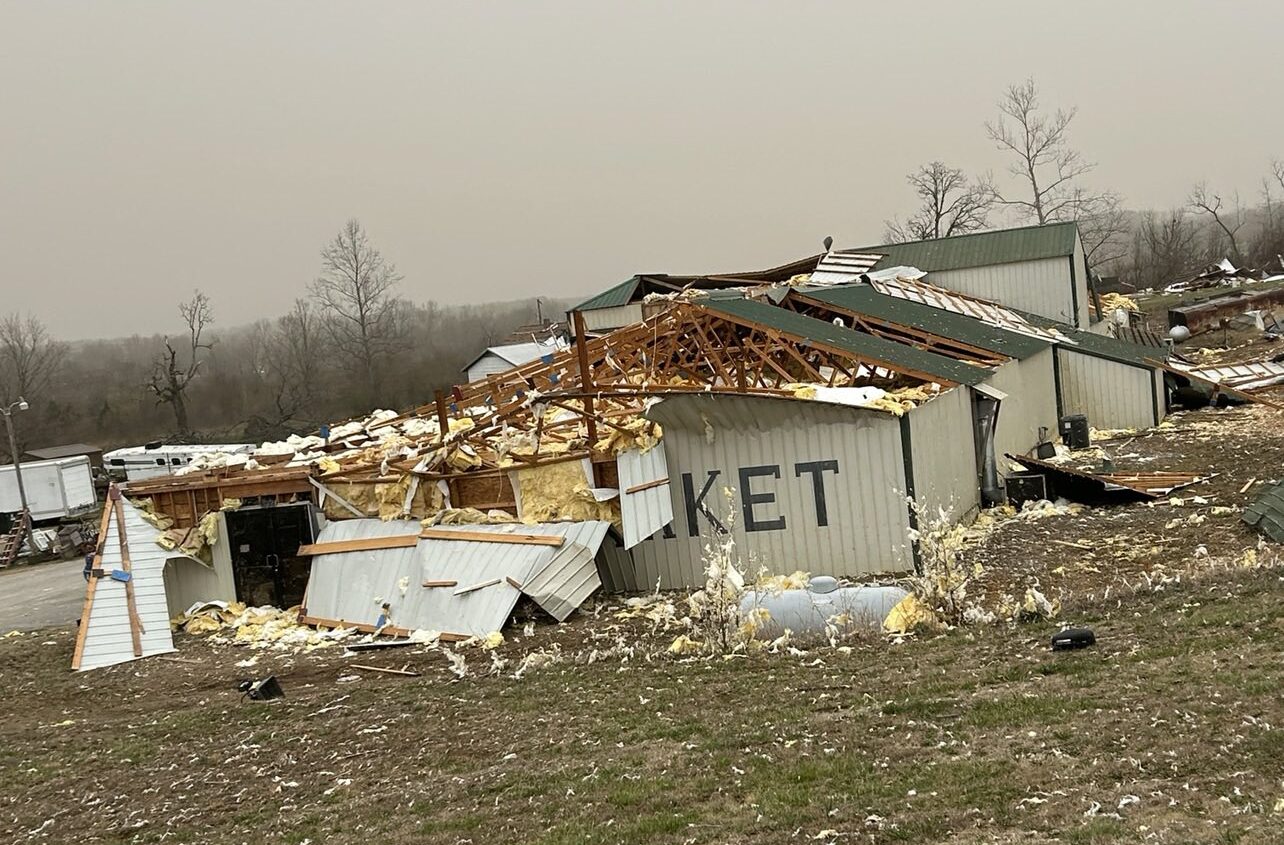
To support tornado recovery efforts, please donate to CDP’s Disaster Recovery Fund and select “US Tornadoes and Severe Weather” from the dropdown.
Contact CDP
Philanthropic contributions
If you have questions about donating to the CDP Disaster Recovery Fund, need help with your disaster-giving strategy, or want to share how you’re responding to this disasters, please contact our development team.
(Photo: Tornado damage in Missouri, March 15, 2025. Credit: Missouri State Highway Patrol via X)
Recovery updates
If you are a responding NGO or a donor, please send updates on how you are working on recovery from this disaster to Tanya Gulliver-Garcia.
We welcome the republication of our content. Please credit the Center for Disaster Philanthropy.
.
Resources
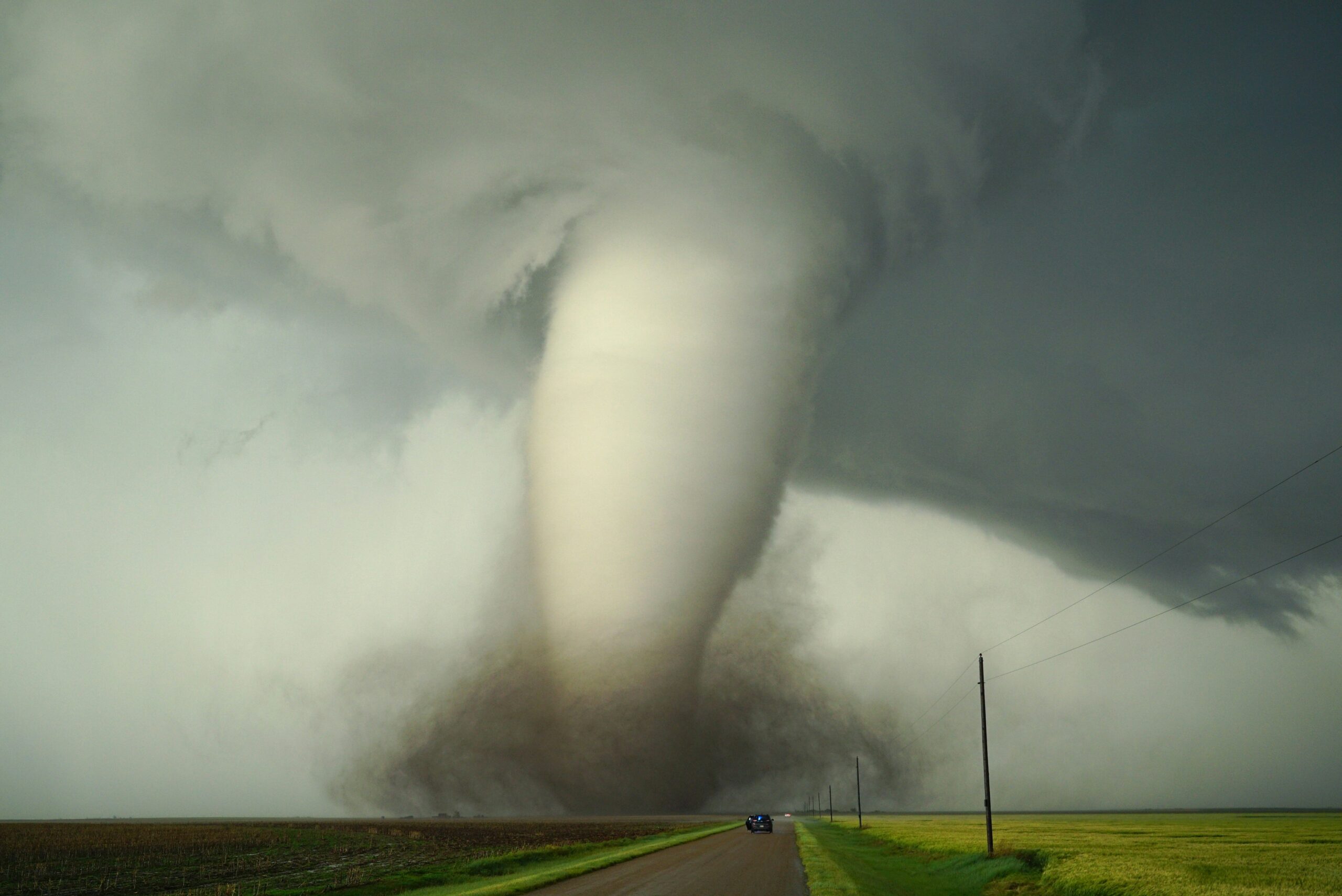
Tornadoes
Tornadoes are powerful storms that can cause considerable damage to communities. They can break branches from trees or lift houses off their foundations. The speed with which they form, and their variable intensity, make them some of the most unpredictable disasters on the planet.
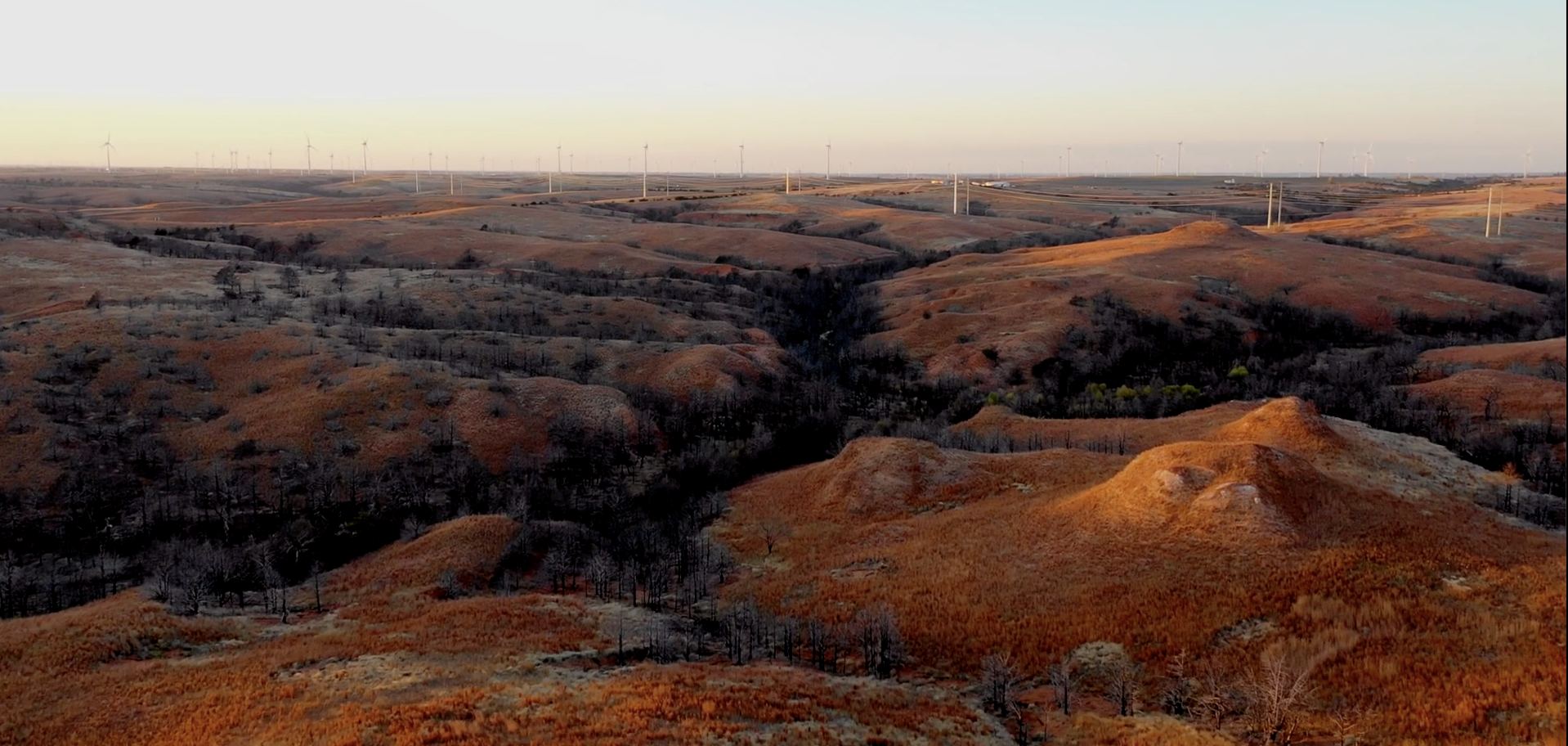
Rural Populations
Rural populations often struggle with disaster response and recovery. Explore why.

Long-Term Recovery Groups
A long-term recovery group is a cooperative body that is made up of representatives from faith-based, nonprofit, government, business and other organizations working within a community to assist individuals and families as they recover from disaster.